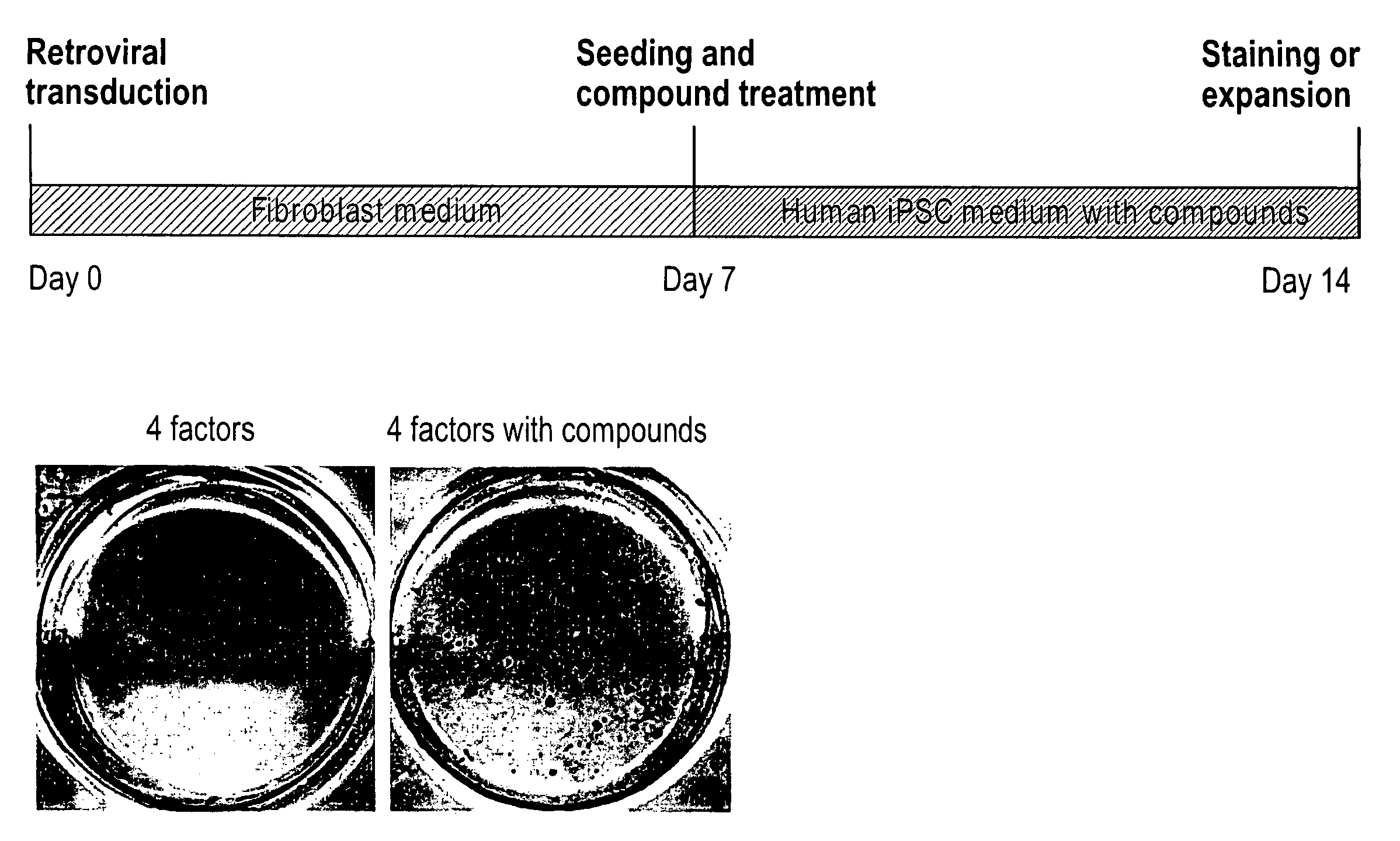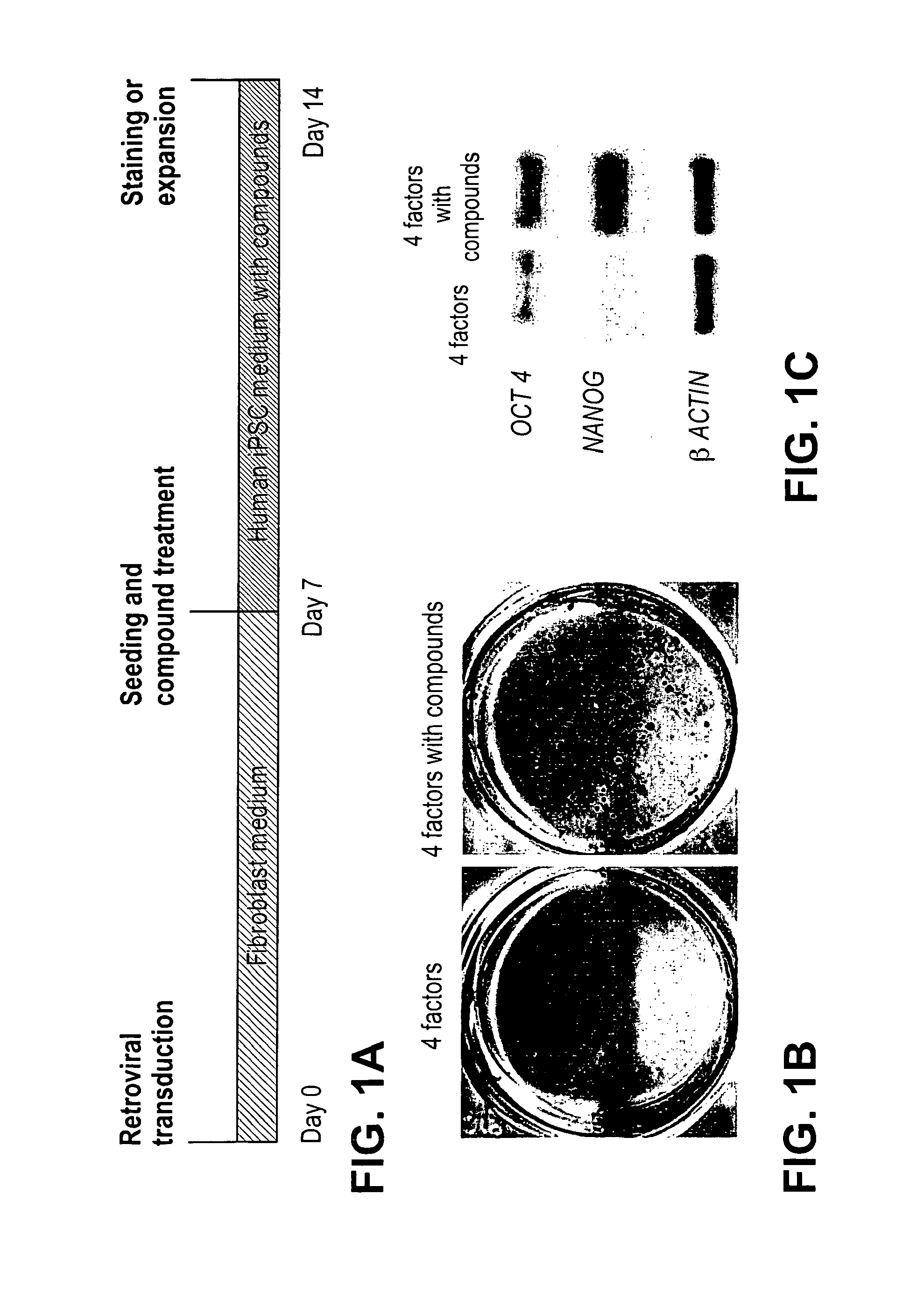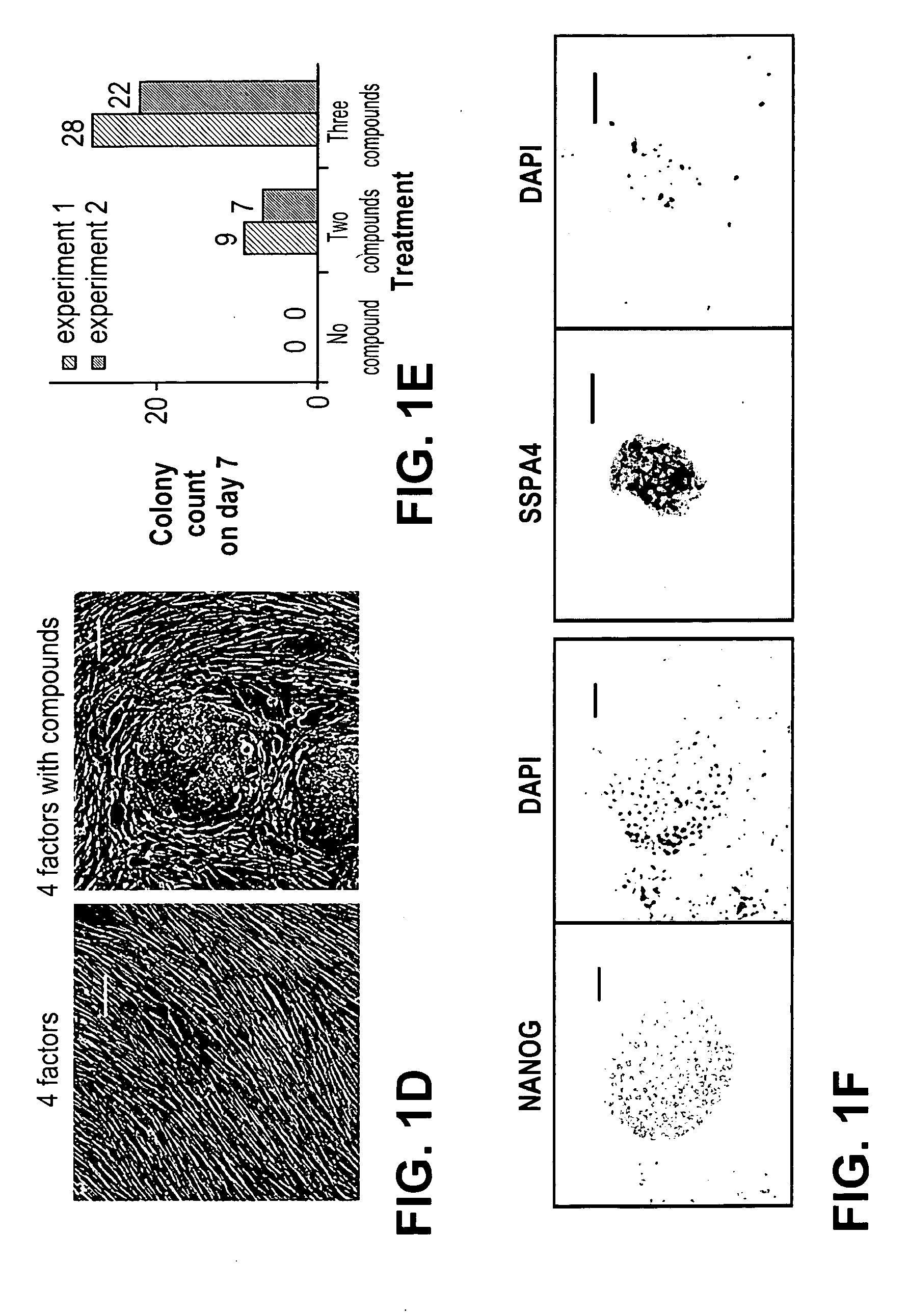Induction of pluripotent cells
a technology of pluripotent cells and cells, applied in the field of pluripotent cell induction, can solve the problems of 4 weeks of ipsc generation, inefficient, heterogeneous population of cells, and difficulty in identifying fully reprogrammed ipscs from such a mixtur
- Summary
- Abstract
- Description
- Claims
- Application Information
AI Technical Summary
Benefits of technology
Problems solved by technology
Method used
Image
Examples
example 1
A Chemical Platform for Improved Induction of Human iPSCs
[0218]Mesenchymal type fibroblasts reprogrammed with the “four-factors” (OCT4, SOX2, KLF4 & c-MYC; 4TFs hereafter) underwent dramatic morphological changes that resulted in iPSCs with distinct cell polarity, boundaries and cell-cell interactions. The reprogrammed cells expressed E-cadherin, a marker for epithelial cells (Hay, E. D., Acta Anat. (Basel) 154, 8-20 (1995)), which is also highly expressed in human embryonic stem cells (hESCs). We reasoned that factors that promote the mesenchymal to epithelial transition (MET), such as TGFβ pathway antagonists, would have a direct impact on the reprogramming process. In addition, MEK-ERK pathway inhibition was previously shown to play an important role in various steps of reprogramming (Chen, S. et al., Proc. Natl. Acad. Sci. USA 104, 10482-87 (2007); Shi, Y. et al., Cell Stem Cell 2, 525-8 (2008)). Furthermore, factors promoting cell survival could also be beneficial in improving ...
example 2
Synthesis of N-(cyclopropylmethyl)-4-(4-(6-hydroxy-3,4-dihydroquinolin-1(2H)-yl)pyrimidin-2-ylamino)benzenesulfonamide (Thiazovivin)
[0236]The reaction flask containing 2,4-dichloropyrimidine (372 mg, 2.5 mmol), 6-methoxy-1,2,3,4-tetrahydroquinoline (489 mg, 3 mmol) and diisopropylethylamine (0.52 mL, 3 mmol) in n-butanol (10 mL) was heated at 40° C. overnight. The solvent was evaporated, and the residue was purified by flash column chromatography to give 2-Chloro-4-(6-methoxy-3,4-dihydroquinolin-1(2H)-yl)pyrimidine (551 mg, 80%). This intermediate (250 mg, 0.91 mmol) was then dissolved in dichloromethane and treated with BBr3 (1 M in dichloromethane) (1 mL, 1 mmol) at −78° C. The reaction mixture was slowly warmed up to room temperature and stirred for 1 hr, poured into water, extracted with dichloromethane. The combined organics were dried over anhydrous Na2SO4 and concentrated. The residue was purified by flash column chromatography to give 2-Chloro-4-(6-hydroxy-3,4-dihydroquinoli...
example 3
Reprogramming of Human Primary Somatic Cells by OCT4 and Chemical Compounds
[0237]Here we report a novel small molecule cocktail that enables reprogramming of human primary somatic cells to iPSCs with exogenous expression of only OCT4.
[0238]Among several readily available primary human somatic cell types, keratinocytes that can be easily isolated from human skin or hair follicle represent an attractive cell source for reprogramming, because they endogenously express KLF4 and cMYC, and were reported to be reprogrammed more efficiently using the conventional four TFs or three TFs (without MYC) (Aasen, T. et al., Nat Biotechnol 26:1276-1284 (2008); Maherali, N. et al., Cell Stem Cell 3, 340-345(2008)). More recently, we reported that dual inhibition of TGFβ and MAPK / ERK pathways using small molecules (i.e. SB431542 and PD0325901, respectively) provides a drastically enhanced condition for reprogramming of human fibroblasts with four exogenous TFs (i.e. OSKM) (Lin, T. et al., Nat Methods...
PUM
| Property | Measurement | Unit |
|---|---|---|
| Structure | aaaaa | aaaaa |
Abstract
Description
Claims
Application Information
 Login to View More
Login to View More - R&D
- Intellectual Property
- Life Sciences
- Materials
- Tech Scout
- Unparalleled Data Quality
- Higher Quality Content
- 60% Fewer Hallucinations
Browse by: Latest US Patents, China's latest patents, Technical Efficacy Thesaurus, Application Domain, Technology Topic, Popular Technical Reports.
© 2025 PatSnap. All rights reserved.Legal|Privacy policy|Modern Slavery Act Transparency Statement|Sitemap|About US| Contact US: help@patsnap.com



